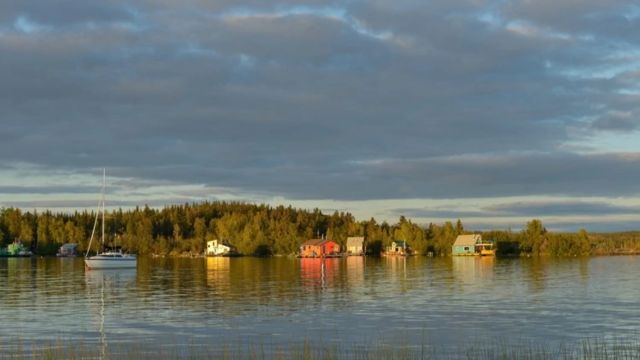Freshwater – a precious resource constituting a mere three percent of Earth’s water – is the lifeblood of lakes, making them indispensable for drinking, agriculture, and sustaining life. With their vast reserves, lakes are not just bodies of water; they are vital ecosystems and natural reservoirs critical for both the present and future generations.
Among these, certain lakes stand out for their colossal sizes, with some harboring up to 20% of the world’s unfrozen freshwater. This article delves into the largest lakes worldwide, revealing their significance, unique characteristics, and the roles they play in our environment.
The Giants of Freshwater
- Caspian Sea – 371,000 km²: Despite its name, the Caspian Sea ranks as the largest lake globally, straddling the continents of Europe and Asia. Its immense area influences climatic conditions and supports diverse ecosystems. Bordering five countries, the Caspian Sea is a major hub for fishing, oil extraction, and international trade, despite its saline waters.
- Lake Superior – 82,103 km²: This North American marvel is the largest of the Great Lakes and the biggest freshwater lake by surface area globally. Its vastness creates unique microclimates and supports rich biodiversity. Lake Superior also plays a crucial role in regional shipping and trade.
- Lake Victoria – 69,484 km²: Africa’s gem and the second-largest freshwater lake by surface area, Lake Victoria is vital for the region’s hydrology, directly influencing the Nile River. It supports dense populations along its shores, though it faces challenges like pollution and overfishing.
- Lake Huron – 59,590 km²: As part of the Great Lakes, Lake Huron is renowned for its beauty and ecological significance. It boasts the largest number of islands among the Great Lakes and plays a significant role in local weather patterns, biodiversity, and commerce.
- Lake Michigan – 57,753 km²: Unique for being entirely within the United States, Lake Michigan is a pivotal freshwater source and transportation route. It connects to Lake Huron, sharing water levels and ecological characteristics.
- Lake Tanganyika – 32,900 km²: Stretching across four countries, Lake Tanganyika is the world’s longest freshwater lake and one of the oldest. Its remarkable depth and ancient waters host unique species, playing a crucial role in local economies through fishing.
- Lake Baikal – 31,722 km²: Nestled in Siberia, Lake Baikal is the deepest and one of the oldest freshwater lakes. It is a biodiversity hotspot, containing thousands of species found nowhere else on Earth. Its pristine waters are crucial for regional ecosystems.
- Great Bear Lake – 31,328 km²: Situated in Canada’s remote Northwest Territories, Great Bear Lake is one of the world’s cleanest, thanks to minimal human impact. It serves as a critical habitat for wildlife and a testament to the importance of conservation.
- Lake Malawi – 29,600 km²: This African Great Lake is known for its biodiversity, especially its unique fish species. Lake Malawi is essential for local communities relying on fishing but faces environmental pressures.
- Great Slave Lake – 28,568 km²: In Canada’s Northwest Territories, Great Slave Lake is vital for the Mackenzie River system, supporting local livelihoods and ecosystems. It experiences long periods of ice cover, demonstrating the challenges and beauty of northern lakes.
Beyond Size: Lakes vs. Seas
Understanding what distinguishes a lake from a sea sheds light on the unique status of bodies like the Caspian Sea. A lake is an inland body of water, typically freshwater, formed through natural processes and isolated from larger bodies of water. In contrast, a sea is a large saltwater body partially enclosed by land but connected to the ocean, influenced by tides. The classification can sometimes be ambiguous, as seen with the Caspian Sea – a ‘sea’ by name but a lake by definition due to its isolation and landlocked nature.
The Imperative of Conservation
The significance of these lakes extends beyond their sheer size. They are cradles of biodiversity, sources of fresh water, and pillars of regional economies. However, they face threats from pollution, overfishing, and climate change. As stewards of the planet, it is crucial to prioritize the conservation and sustainable management of these water bodies. Their preservation is not just for the sake of beauty or biodiversity but for the survival and well-being of future generations.

